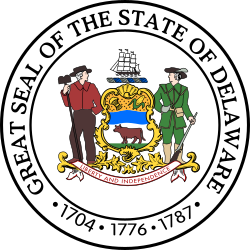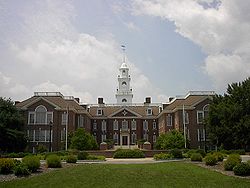Government of Delaware | |
|---|---|
 Logo of the Delawarean government  | |
| Part of | United States of America |
| Constitution | Constitution of Delaware |
| Legislative branch | |
| Name | General Assembly |
| Type | Bicameral |
| Meeting place | Delaware Legislative Hall |
| Upper house | |
| Name | Senate |
| Presiding officer | Kyle Evans Gay, President |
| Lower house | |
| Name | House of Representatives |
| Presiding officer | Peter Schwartzkopf, Speaker |
| Executive branch | |
| Head of state and government | |
| Title | Governor |
| Currently | Matt Meyer |
| Appointer | Election |
| Cabinet | |
| Leader | Governor |
| Deputy leader | Lieutenant Governor |
| Headquarters | Delaware Legislative Hall |
| Judicial branch | |
| Courts | Courts of Delaware |
| Delaware Supreme Court | |
| Chief judge | Collins J. Seitz Jr. |
| Seat | Wilmington |
The Government of Delaware encompasses the administrative structure of the US state of Delaware as established by its 1897 constitution. Analogously to the US federal government, it is composed of three branches: executive, legislative, and judicial. The Governor is head of the executive, the General Assembly is the legislature, and the Supreme Court is the highest court. The state is also organized into counties, municipalities, school districts, and special districts.
